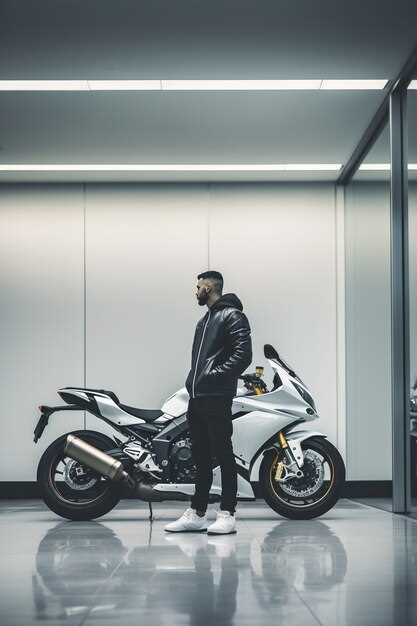

When it comes to selecting the perfect motorcycle, one of the most critical factors to consider is your height and body build. A bike that feels comfortable and manageable can significantly enhance your riding experience, making it essential to find a model that aligns with your physical attributes. Riding should be a joy, not a struggle, and an appropriate fit can make all the difference.
Riders of different heights often face unique challenges when it comes to motorcycle ergonomics. A motorcycle that is too tall or too heavy can lead to difficulty in maneuvering and control, potentially compromising safety. Conversely, a bike that is too small may lack power and stability, making long rides uncomfortable. Therefore, understanding the various dimensions and specifications of motorcycles is crucial for making an informed choice.
In this article, we will explore the key factors to consider when choosing a motorcycle based on your height and build. From seat height and weight distribution to the type of bike that may best suit your physique, we aim to provide a comprehensive guide to help you find a motorcycle that fits not just your style, but your body as well. Whether you’re a beginner or an experienced rider, making the right choice is paramount for both enjoyment and safety on the road.
Understanding Seat Height and Its Impact on Comfort
Seat height is a crucial factor in motorcycle selection, significantly influencing rider comfort, control, and overall experience. The distance from the ground to the seat can determine how well a rider can reach the ground while stopped, which is essential for stability and confidence.
A lower seat height provides an advantage for shorter riders, allowing them to place both feet firmly on the ground. This stability not only enhances comfort but also promotes a sense of security, especially when navigating in traffic or at slow speeds. Additionally, a lower center of gravity can improve handling and maneuverability.
In contrast, a higher seat height can be beneficial for taller riders, providing a more spacious riding position. It allows for better leg extension and can contribute to a more aggressive riding posture that some sport bike enthusiasts prefer. However, taller seats can pose challenges for shorter riders, leading to difficulties in balancing the motorcycle when stopped and increased fatigue during long rides.
Understanding your height and inseam length is essential when considering seat height. Riders should sit on various motorcycles to assess comfort levels and the ability to reach the ground comfortably. Many manufacturers offer motorcycles with adjustable seat heights or aftermarket solutions to cater to different rider sizes.
Moreover, the type of riding influences the importance of seat height. Touring riders may prioritize a comfortable, flat seat for long-distance comfort, while off-road enthusiasts may prefer a seat that allows for easy shifting of weight. Therefore, considering how you plan to use the motorcycle can guide your choice regarding seat height.
In conclusion, selecting the right seat height is vital for maximizing comfort and control. A well-fitted motorcycle enhances the riding experience and empowers the rider to enjoy the journey fully.
Determining Weight Distribution and Riding Style Compatibility

When choosing a motorcycle, understanding weight distribution is crucial for both comfort and performance. Weight distribution affects how a motorcycle behaves during acceleration, braking, and cornering. A bike with a balanced distribution will provide more stability and control, especially for riders of varying heights and builds.
Rider Position and Weight Distribution
The ergonomics of a motorcycle significantly influence how a rider interacts with the bike. Taller riders may require motorcycles with higher seat heights and adjusted footpeg locations to maintain a comfortable posture. Conversely, shorter riders should look for models that allow them to reach the ground easily, ensuring better stability at stops. This consideration directly affects how a rider’s weight is distributed across the motorcycle during operation.
Types of Motorcycles and Riding Styles
Different motorcycle types cater to various riding styles, each with unique weight distribution characteristics. For example, sport bikes usually have a more aggressive forward-leaning position, enhancing control at high speeds but requiring a more skilled weight transfer from the rider during cornering. In contrast, cruisers often provide a more laid-back posture conducive to relaxed riding, benefiting taller riders who can comfortably manage the bike’s weight.
Rider Experience and Skills
Novice riders may prefer cruisers or touring bikes, which typically offer better balance and weight distribution, instilling confidence during slow maneuvers. More experienced riders might seek out sport bikes or dual-sport models, which demand a greater understanding of weight shifting and body positioning to maximize performance. As riding skills develop, the ability to manage weight distribution becomes more critical in achieving smooth and controlled maneuvers.
Testing Weight Distribution
Before purchasing a motorcycle, potential buyers should test ride various models. Paying attention to how the bike feels when stationary and during movement can provide insight into its weight distribution characteristics. It’s essential to assess how the motorcycle handles when turning, accelerating, and braking to determine compatibility with one’s riding style.
Ultimately, considering weight distribution in relation to a rider’s height and build is vital for choosing the right motorcycle. Aligning personal riding style with the motorcycle’s characteristics will enhance the riding experience and promote safety on the road.
Selecting Bike Types Based on Body Proportions

Choosing the right motorcycle involves understanding how your body proportions can influence the fit and comfort on the bike. Various bike types cater to different body shapes, ensuring that riders experience optimal control and comfort while riding.
Sport Bikes: For shorter riders, sport bikes with lower seat heights and a more compact design can provide a better fit. Consider models that offer adjustable seats or lower suspension options. These bikes typically have a forward-leaning position, which might put strain on taller riders, so selecting a bike with a bit more legroom is crucial for comfort and handling.
Cruisers: Cruisers are generally accommodating for various heights due to their laid-back seating position and lower center of gravity. Taller riders can find ample space with extended reach handlebars and longer footpeg placements. For shorter riders, options with a narrower seat can allow for better foot placement on the ground, enhancing stability when stopping.
Dirt Bikes: These motorcycles often feature higher seat heights, which can be challenging for shorter riders. It’s advantageous to look for dirt bikes with adjustable suspensions or lower profiles to ensure a comfortable ride. Taller riders may find dirt bikes more suitable, as the additional height provides better control over rough terrain.
Touring Bikes: Designed for long distances, touring bikes provide spacious seating and adjustable ergonomics, making them accessible for various body types. Adjustments in handlebars and seat height can cater to both shorter and taller riders, ensuring a comfortable riding posture over extended trips.
Dual-Sport Bikes: These versatile motorcycles combine features of street and dirt bikes. They often come in varying seat heights, making it possible for riders of different statures to find a suitable fit. Shorter riders may need to consider dual-sport bikes with lower seats, while taller riders can benefit from the more upright and expansive riding position.
Ultimately, it’s essential for riders to test different motorcycles to find a model that aligns with their unique body proportions. Comfort and control are paramount, as the right motorcycle will enhance the overall riding experience.





